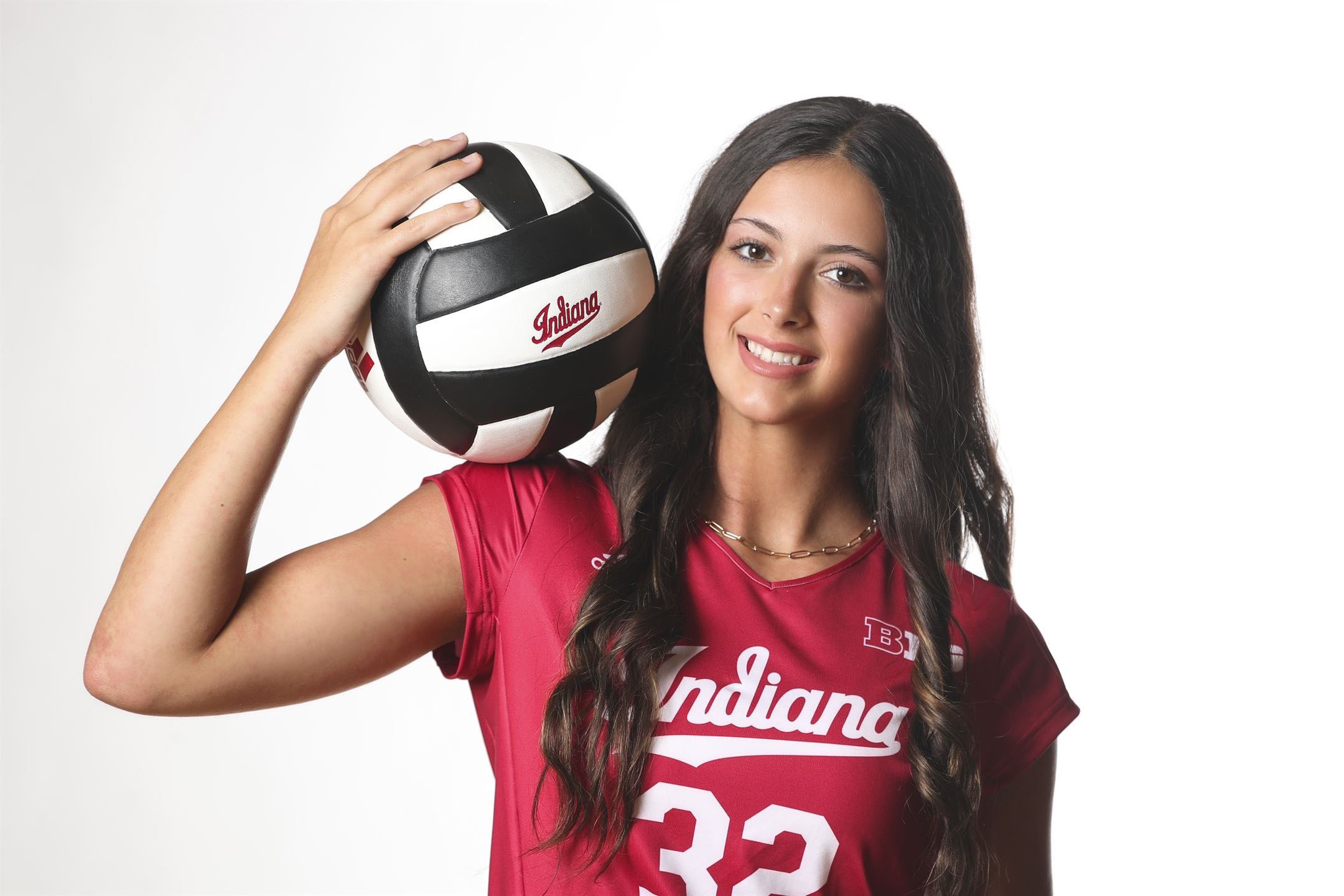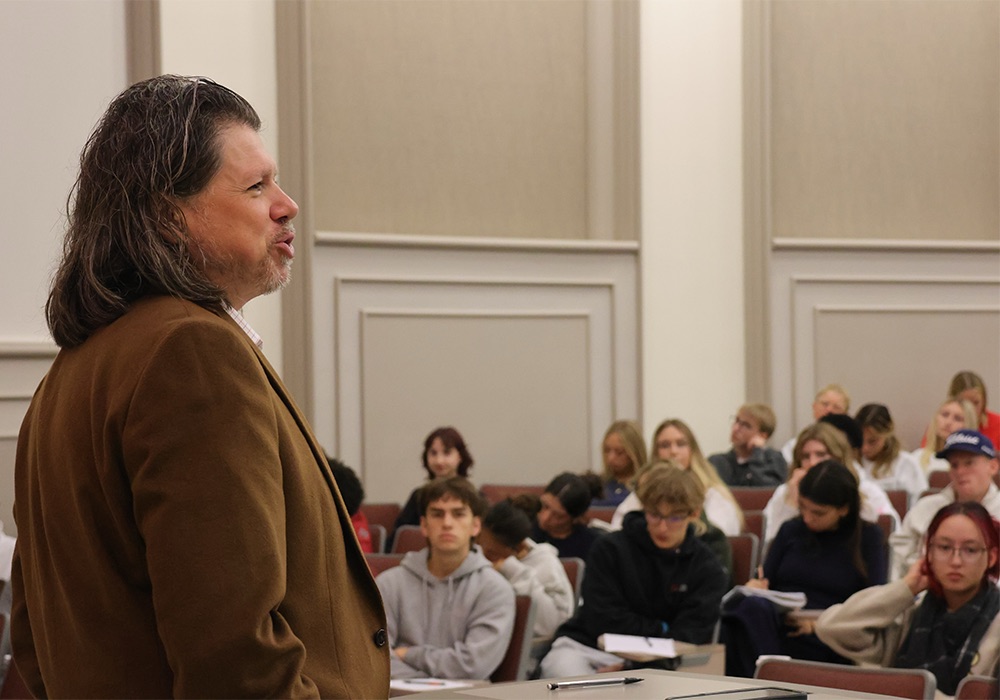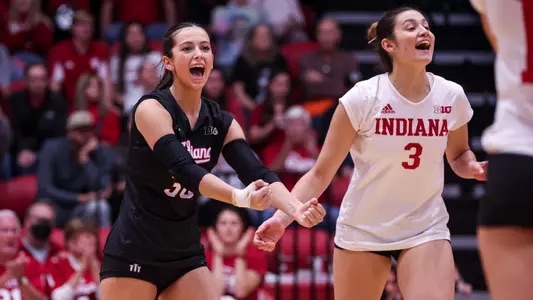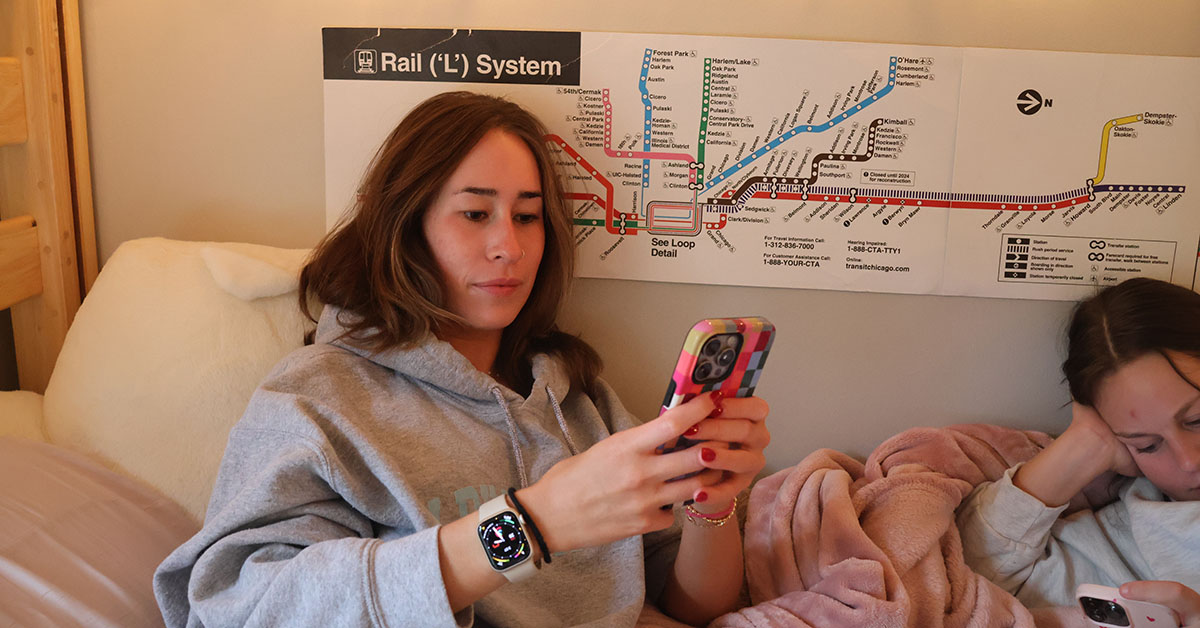Women Vs NIL
By: Mayah Weeks, Sophie Doyne, Alaina Moore
BLOOMINGTON, Ind. (Nov. 5, 2024).
It is a regular Monday morning in October. A typical iPhone alarm sounds at around 9:30 AM, and Ramsey Gary has around 30 minutes of everyday life before being thrown into her crazy schedule. Gary, a 5 ‘7 sophomore volleyball player at Indiana University, spends many hours on her sport; when asked, she states, “Outside my sleeping, like over half my day (is spent on volleyball), like 14 hours”. The rest of her time is spent on student life. However, Gary brought up another aspect of her volleyball life that goes over most of her fellow students’ heads. Her constant focus on how she presents herself as a person, her NIL. With this in mind, a question was brought up as we look deeper into NIL and college athletes. Is there a difference between the type of NIL deals male and female athletes receive?

NIL (Name, Image, Likeness) is a fairly recent oddity in the collegiate world regarding pay. Until now, collegiate athletes have only received scholarships, but social media highly influenced the conversation about NIL. Collegiate athletes are able to earn sponsors and get paid to make social media posts, in addition to their hard work in their respective sports. Galen Clavio, a sports-media researcher, states that “up until April 2025, colleges can take athlete’s money.” So currently, two different aspects of NIL provide an income for college athletes. Clavio brings up being a good athlete and attracting television viewers, and two, being good at social media and being paid that way. With this, a topic stands out the most: the difference between NIL in female and male athletes. Women athletes must work harder and face more challenges than their male counterparts to secure NIL deals, which are often overlooked.

Being a woman and playing a sport comes with added pressure to make your name known on and off the court, while men focus almost solely on just playing the sport. To gain brand visibility, women must capitalize on their marketability, personality, and social media following. At the same time, male athletes tend to get NIL deals based on their field performance and media coverage. In fact, women were the first to benefit from social media and NILs. When asked about this topic in a panel, an athletic advisor at IU, Jeremy Gray, states, “Women make up an outsize portion of it (NIL), they’re way more effective on social media, and that male counterparts have yet to master the art of NIL.” Although it is much easier for female athletes to gain a following on different platforms, male sports still receive more attention than females. When asked about this, many students at IU stated that they are more educated on men’s sports than women’s. This caused women athletes to become their own marketers and create individual content that makes them seem appealing to brands. Women’s leagues lack the same audience male leagues get, causing brands to avoid giving these deals to women, initiating athletes to work much harder and focus on many other factors their male counterparts never have to consider.
We interviewed various Indiana University students to find out their thoughts on how gender affects NIL. The interviews highlighted the societal standards placed on collegiate female athletes.

Women have gender stereotypes they have to keep in mind while trying to secure these deals. Brands mainly look for women to do beauty, fashion, and aesthetic deals. A great example is the LSU gymnast Olivia Dunne, who is the most followed NCAA athlete on social media. Most of her followers do not keep up with her sport but rather her beauty. NILs like this leave broad or even sports-related sponsorships for men. Stereotypes like this force women athletes to work harder because they must look for brands that fit these beauty categories. In addition, women athletes spend more time off the court interacting with their fans and creating content. “You’re working on your NIL every day of your life, and people are always judging you, looking at you in a certain way. If I hold the door for someone, I am portraying my core values,” Gary adds. Even with the extra time and effort women athletes put in, NIL deals are not evenly distributed by gender.
Women’s sports have to face lower salaries and receive less funding than men’s. This creates a more significant focus on receiving NIL deals, which is even more important for female athletes when looking for the support they need to keep the sport alive. Most of the time, NIL money is put toward hiring better coaches and providing for transportation costs. With these smaller budgets, brands giving these NIL deals to female athletes have to make sure it’s worth the investment, and this causes women to have to do what I mentioned earlier – work harder, interact with their fans, and perform on and off the court. NIL is important for all sides of the field, whether man or woman. However, women have worked for years to gain the attention they deserve. Recently, their efforts have benefitted them more now than ever as “there has been a large increase in women’s sports watchers,” according to Clavio, so despite the revenue gap between the two genders, there is still hope for these fighting women to make the money they deserve and hopefully catch a break.






